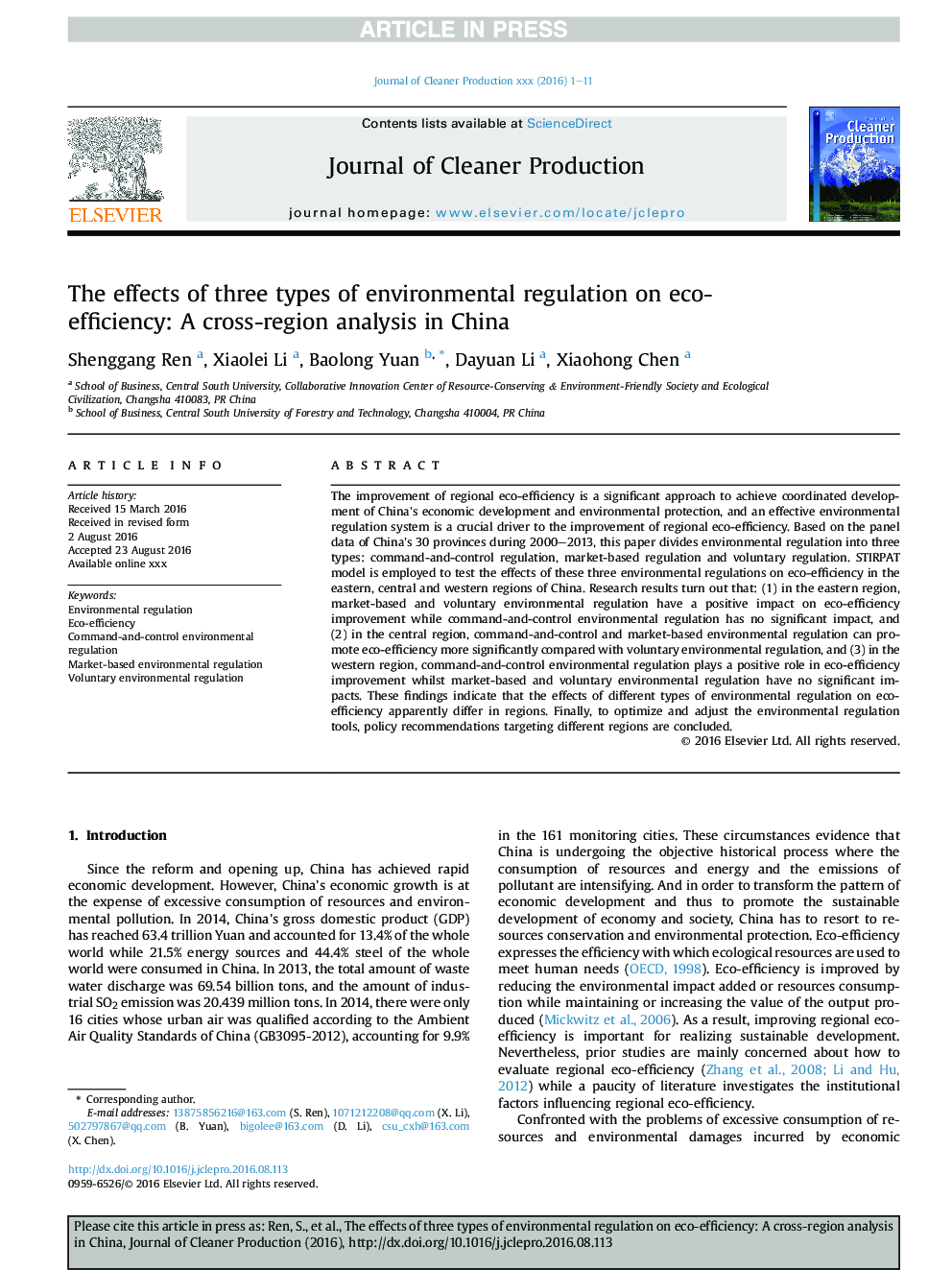| Article ID | Journal | Published Year | Pages | File Type |
|---|---|---|---|---|
| 8099722 | Journal of Cleaner Production | 2018 | 11 Pages |
Abstract
The improvement of regional eco-efficiency is a significant approach to achieve coordinated development of China's economic development and environmental protection, and an effective environmental regulation system is a crucial driver to the improvement of regional eco-efficiency. Based on the panel data of China's 30 provinces during 2000-2013, this paper divides environmental regulation into three types: command-and-control regulation, market-based regulation and voluntary regulation. STIRPAT model is employed to test the effects of these three environmental regulations on eco-efficiency in the eastern, central and western regions of China. Research results turn out that: (1) in the eastern region, market-based and voluntary environmental regulation have a positive impact on eco-efficiency improvement while command-and-control environmental regulation has no significant impact, and (2) in the central region, command-and-control and market-based environmental regulation can promote eco-efficiency more significantly compared with voluntary environmental regulation, and (3) in the western region, command-and-control environmental regulation plays a positive role in eco-efficiency improvement whilst market-based and voluntary environmental regulation have no significant impacts. These findings indicate that the effects of different types of environmental regulation on eco-efficiency apparently differ in regions. Finally, to optimize and adjust the environmental regulation tools, policy recommendations targeting different regions are concluded.
Related Topics
Physical Sciences and Engineering
Energy
Renewable Energy, Sustainability and the Environment
Authors
Shenggang Ren, Xiaolei Li, Baolong Yuan, Dayuan Li, Xiaohong Chen,
